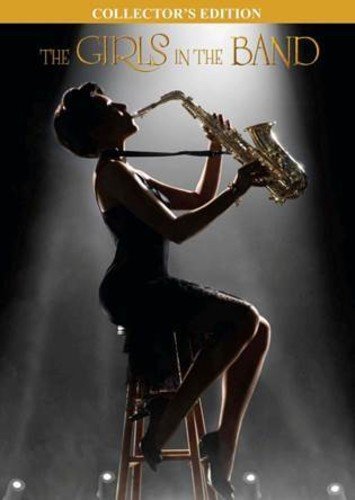
When asked to name prominent female jazz artists, most fans can list Sarah Vaughan, Ella Fitzgerald, or Billie Holiday. All were legendary singers, but what about musicians? While a few names may come to mind today such as Esperanza Spalding and Diana Krall, many toiled in all-girl bands or behind the scenes for decades, never receiving the recognition they deserved. The documentary The Girls in the Band spotlights women from the late 1930s to today, demonstrating how they battled sexism and being labeled as “novelty acts” to pave the way for modern artists.
Director Judy Chaikin–best known for writing, producing, and directing the PBS documentary Legacy of the Hollywood Blacklist–presents an often fascinating look at artists who toiled in obscurity for years. Culled from archival footage and interviews with surviving big band and jazz instrumentalists, the movie tells a compelling story filled with success and frustration. In the 1930s and 1940s, female jazz musicians were often relegated to vaudeville, presented as “novelty acts” and “curiosities” to audiences. One such artist remembers when she first saw a woman playing a saxophone onstage–except they were conjoined twins who played while on roller skates. Serious artists finally got their break with the International Sweethearts of Rhythm, the first integrated all-girl big band in the United States. They toured nationally, amazing audiences with their showmanship and playing ability. By the late 1940s, however, the band folded due to many factors including the end of World War II. By then men had returned home and resumed their previous jobs, including being jazz artists, and women were expected to marry and raise children.
Over the decades women slowly gained a limited amount of acceptance in the jazz community. Respected pianist Marian McPartland describes performing in the 1950s and 1960s, recalling how she was asked to join a vaudeville act, told that she “played well for a girl,” and was dismissed as “decorative” on a television show. What Girls in the Band reveals is that she appears in the famous 1958 photograph A Great Day in Harlem, where prominent black and white jazz artists of the time posed in front of a Brownstone.
It is both fascinating and maddening to hear artists like Roz Cron, a saxophonist who played with the Sweethearts as well as the Ada Leonard Orchestra, and Clora Bryant, a trumpet player who performed with both bands as well as artists like Dizzy Gillespie and Charlie Parker, describe the sexism and racism they encountered. They had to wear frilly dresses and high heels at all times, smile constantly (which is difficult while playing the horn, one dryly commented), and sport long hair to maintain their femininity.
After the 1960s women’s rights movement, women experienced an easier time entering the jazz field. Multi-instrumentalist Patrice Rushen (best known for her 1982 hit “Forget Me Nots”) states that while she had an easier time being accepted as a jazz artist, she recognizes the women before her who paved the way. While other artists like Maria Schneider, Rushen, Krall, and Spalding are featured, some question remain: how far have female jazz musicians really come? Are they still expected to look a certain way, and do they earn as much as their male counterparts? The Girls in the Band sidesteps these issues.
Chaikin also uses a nonlinear approach to storytelling, with unexplained diversions from chronology. The viewer becomes confused as to which time period the film focuses on from one moment to the next. While this may have been an artistic decision, it inhibits some understanding of how quickly–or slowly–women progressed in terms of acceptance. Since presumably few have heard of the International Sweethearts of Rhythm and other acts, a clear, linear narrative would have been more useful for comprehension.
Despite its flaws, The Girls in the Band should be required viewing for any female musician, jazz or otherwise. It not only gives long overdue recognition to some superior artists, but it presents modern women with a clear picture of how far they have come, and how far they still have to travel. The final shot of the film–an all-female recreation of the Great Day in Harlem photograph–speaks volumes. It links past and present, illustrating how prejudice can be slowly overcome to finally give unfairly overlooked artists a voice.